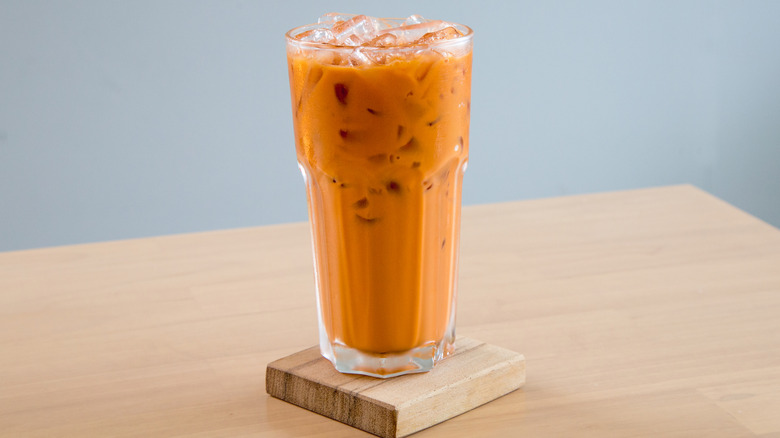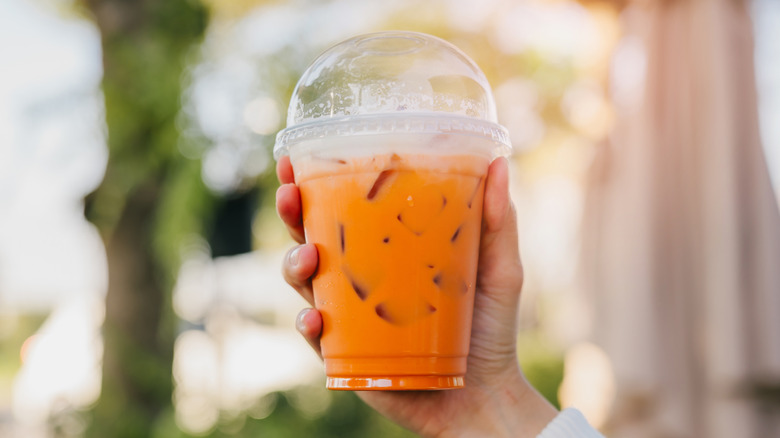How Thai Iced Tea Gets Its Iconic Color
We may receive a commission on purchases made from links.
Nothing complements a hot and spicy plate of pad prik pao from my local Thai spot better than a sweet, cold, and very orange Thai iced tea. After cooling the effect of my Thai spice level choice, I'm left to wonder how a glass of fire-taming tea, spices, and condensed milk yields an iridescent orange color. It turns out, we have American palates to thank for that: Thai chefs in the U.S. started making the tea orange, sweeter, and spicier to appeal to stateside clientele. Apparently, we need bright, sweet things to entice us, which follows a long tradition of adjusting Thai food in America.
Often, the orange hue just comes from artificial colorings like FD&C Yellow No. 6, though this additive is among the ingredients that will be phased out in the United States by the end of 2025 with the FDA's latest food dye ban. Annatto extract is also used in blends without synthetic ingredients, like this Yim Tea Co. Thai tea mix.
You can absolutely make Thai iced tea without food coloring, but it will yield a darker, more muted amber-orange color. This is because the Assam tea typically used yields a dark brown tea with orange undertones. Adding the condensed milk softens the color, and the tea does take on a lightly orange hue. But without food dye of some kind, it will never achieve the bright color Thai iced tea is known for.
The history of Thai iced tea
It's surprising Thai iced tea only came about in the 1980s. I assumed it had been a core part of Thai cuisine for, well, a long time! Tea production and cultivation have been around in Thailand since the 11th or 12th century, but tea never became central to Thailand's cultural practices. In fact, tea wasn't even a popular beverage in Thailand, with consumption being very low until the late 1980s. If tea was consumed, the leaves were usually pickled or fermented and chewed — this northern Thai preparation is known as miang.
One reason for the growth in tea consumption was the Thai government's fight against opium. Opium was a cash crop because of the Chinese occupation of northern Thailand during the Chinese civil war. Chinese nationalist forces, called the Kuomintang (KMT), persuaded Thai farmers to grow poppies and make opium in the 1940s, which the KMT could then use to raise funds. Naturally, the industry grew, but it wasn't until the 1985 implementation of Thai Royal Projects in the region that rooting out opium production began in full force. Tea was promoted as an alternative cash crop by the Thai government.
As to how Thai iced tea itself came about, the one recurring legend is that a Thai field marshal named Pibul Songkram started adding milk and ice to tea. It became a popular street beverage, with street carts coming up with their own slightly varying recipes, but the core remained consistent: crushed ice, strong black tea, and sweetened condensed milk. Star anise and orange blossom water were sometimes used as flavorings, but the heavy, Indian masala chai-like spices appear to be an American Thai addition.

